| Srl | Item |
| 1 |
ID:
068788
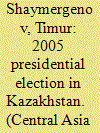

|
|
|
| 2 |
ID:
055180
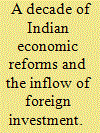

|
|
|
| 3 |
ID:
113390


|
|
|
| 4 |
ID:
116189
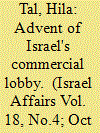

|
|
|
|
|
| Publication |
2012.
|
| Summary/Abstract |
The commercial lobby phenomenon first emerged in Israel in the 1990s and has since expanded at an impressive pace. There are more than 100 commercial lobbyists authorized to work in the Knesset, and commercial lobbyists in Israel represent more than 400 clients. This article describes the factors that led to the advent of this sector and fostered its rapid growth: globalization and Americanization; changes in the Israeli economic system; liberalization and weakened political parties; and the ban against Knesset members engaging in additional occupations. The article concludes by discussing potential developments in Israeli lobbying.
|
|
|
|
|
|
|
|
|
|
|
|
|
|
|
|
| 5 |
ID:
140004


|
|
|
|
|
| Summary/Abstract |
As the end of 2015 draws nearer, the prospect of meeting all the goals of the ASEAN Economic Community (AEC) Blueprint appears dimmer by the day. The literature identifies two prominent gaps in ASEAN’s journey towards an economic community as defined by its own vision. First, the extensive literature on the AEC, and this includes the scorecard designed to monitor the implementation of its goals, suggests that there appears to be a gap between commitments and the achievements of the AEC Blueprint targets. Second, attaining a “free flow of services” as stated in the AEC goals, is also hampered by a gap between commitments in liberalization and actual practice. The objectives of this paper are twofold. First, it seeks to review the gap between commitments and practice in Malaysia. Second, it aims to examine domestic conflicts that may constrain Malaysia’s services liberalization efforts in ASEAN. A key question considered in the analysis is the source or sources of these conflicts. Is the conflict confined to the private sector or is the government conflicted from within in terms of services liberalization? In other words, are there certain policies that may negate or off-set liberalization efforts? The key finding in this paper shows conflicting objectives in government policies to be the main reason for the slow pace of liberalization thus far.
|
|
|
|
|
|
|
|
|
|
|
|
|
|
|
|
| 6 |
ID:
066004
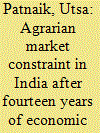

|
|
|
| 7 |
ID:
078034
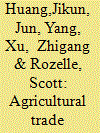

|
|
|
|
|
| Publication |
2007.
|
| Summary/Abstract |
The overall goal of this paper is to examine the impacts of trade liberalization on China's agriculture, in general, and poverty, in particular. The impacts on agriculture are analyzed by commodity and by region. Because different farmers (especially those in different income brackets) produce diverse sets of commodities, the main part of our paper analyzes the effects on households and their implications for the poverty through the simulation of household production and consumption changes in response to the trade-induced market prices changes on a disaggregated (by province), household-level basis. The results of our analysis lead to the conclusion that, unlike fears expressed in the popular press and by some scholars, the positive impacts of trade liberalization are actually greater than the negative ones. Although other effects on the rural economy from trade liberalization of other subsectors (such as textiles) may be equally large or even larger, this study's focus on the agricultural sector shows that there will be an impact from agricultural trade liberalization and that the net impact is positive for the average farm household in China. However, policymakers still need to be concerned. Not all households and not all commodities will be treated equally. Our findings show that poorer households, especially those in the provinces in the western parts of China, will be hurt. The main reason is that the farmers in Western China are currently producing commodities that are receiving positive rates of protection, rates of protection that will fall with additional trade liberalization. Hence, if policy makers want to minimize the impacts, there needs to be an effort to minimize the effect on these households either by direct assistance or by eliminating constraints that are keeping households from becoming more efficient by shifting their production more towards those commodities that will benefit from trade liberalization
|
|
|
|
|
|
|
|
|
|
|
|
|
|
|
|
| 8 |
ID:
131492
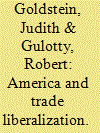

|
|
|
|
|
| Publication |
2014.
|
| Summary/Abstract |
Among scholars, delegation of power to the US president in 1934 is widely believed to have been a necessary requisite for tariff reductions in ensuing years. According to conventional wisdom, delegation to the president sheltered Congress from constituent pressure thereby facilitating the opening of the US economy and the emergence of the United States as a world power. This article suggests a revision to our understanding of just how that occurred. Through a close study of the US tariff schedule between 1928 and 1964, focusing on highly protected products, we examine which products were subject to liberalization and at what time. After 1934, delegation led to a change in trade policy, not because Congress gave up their constitutional prerogative in this domain but because presidents were able to target the potential economic dislocation that derives from import competition to avoid the creation of a congressional majority willing to halt the trade agreements program.
|
|
|
|
|
|
|
|
|
|
|
|
|
|
|
|
| 9 |
ID:
111731


|
|
|
|
|
| Publication |
2012.
|
| Summary/Abstract |
Let me start with the following question: Have Arab countries started the transition to democracy or not? This is the question now being asked around the world. To address this question I will begin with a quotation from Professor Sa'ad Eddin Ibrahim, who suggested that the Arab region has the plight of a triangle of actors. These three actors are al-toghah, al-gulah and alghuzah. Toghah are the authoritarian regimes, gulah are the extremists and ghuzah are the invaders. The thesis of Ibrahim was that it was the toghah, the authoritarian regimes who created the gulah, the extremists, as another despotic response to the despotism of the authoritarian regimes. Despotism creates another form of despotism. Then together the toghah and the gulah, the authoritarians and the extremists, brought the ghuzah, the invaders to the region, such as what happened in Iraq. In order to have democracy in Iraq, you have to do it through an invasion from outside.
|
|
|
|
|
|
|
|
|
|
|
|
|
|
|
|
| 10 |
ID:
053181
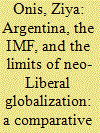

|
|
|
| 11 |
ID:
068236
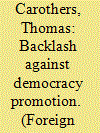

|
|
|
| 12 |
ID:
114186


|
|
|
|
|
| Publication |
2012.
|
| Summary/Abstract |
While extensive scholarship has shown that it is possible to maintain global economic openness after hegemony, economic liberalization is still thought to be unlikely prior to hegemonic ascent. This assumption is based on the conventional narrative that Great Britain began lowering its trade barriers in the 1820s as it began its hegemonic ascent. This article shows that Britain began pursuing an open trading structure in the 1780s-in precisely the multipolar world that hegemonic stability theorists claimed would be least likely to initiate the shift. This change in commercial strategy depended crucially on the intellectual conversion of a key policymaker-the Earl of Shelburne-from mercantilist foreign economic policy to Adam Smith's revolutionary laissez-faire liberalism. Using the case of "the world's most important trading state" in the nineteenth century, this article highlights the importance of intellectuals-as well as their ideas-in shaping states' foreign policy strategies. It also provides further evidence of key individuals' significance and their decisions at "critical junctures."
|
|
|
|
|
|
|
|
|
|
|
|
|
|
|
|
| 13 |
ID:
128146
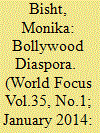

|
|
|
|
|
| Publication |
2014.
|
| Summary/Abstract |
The liberalization and the forces of globalization enhance the employment options, expansion of service sector and demand of skills across the borders. With this liberalization of the economy, a growing number of NRIs primarily from the United States and United Kingdom have also begun investing in their cultural homeland (Pulkit Datta: 2008). The aspiration of better lives and employment opportunities expanded the size of middle class abroad during 1990s, the terms "Non Resident Indian" emerged for the Indian who is living abroad. This is why; this period can be considered as the Golden Age of the NRI, which resulted the emerging middle class and the new material aspirations of an India in the midst of economic liberalization (Ingrid Thewath:2010).
|
|
|
|
|
|
|
|
|
|
|
|
|
|
|
|
| 14 |
ID:
134025


|
|
|
|
|
| Publication |
2014.
|
| Summary/Abstract |
The paper presents an analysis of the factors explaining the export performance of firms in the defence sector. We focus on the case of Norway, and make use of two complementary methodologies: the first is based on econometric firm-level data analysis for the whole population of defence companies, and the second is based on qualitative case study research on the three most important defence export products (weapon stations, ammunition and electronics). Our empirical results highlight the importance of four major success factors for exporting firms: (1) the participation in offset agreements; (2) the ability to focus on their set of core competencies; (3) their R&D activities and interactions with the public S&T system; and (4) demand opportunities and, relatedly, user-producer interactions.
|
|
|
|
|
|
|
|
|
|
|
|
|
|
|
|
| 15 |
ID:
017997
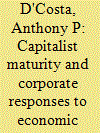

|
|
|
|
|
| Publication |
July 2000.
|
| Description |
141-163
|
|
|
|
|
|
|
|
|
|
|
|
|
|
|
|
| 16 |
ID:
056601
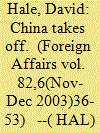

|
|
|
| 17 |
ID:
162384
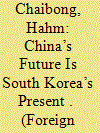

|
|
|
| 18 |
ID:
061780
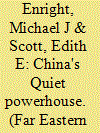

|
|
|
| 19 |
ID:
053917
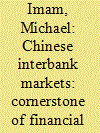

|
|
|
|
|
| Publication |
Sep-Oct 2004.
|
|
|
|
|
|
|
|
|
|
|
|
|
|
|
|
| 20 |
ID:
057650
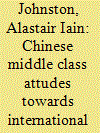

|
|
|